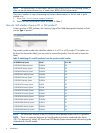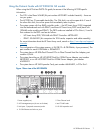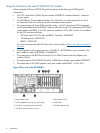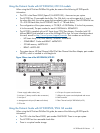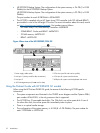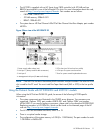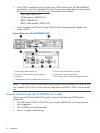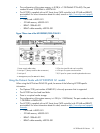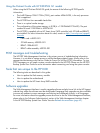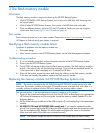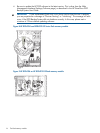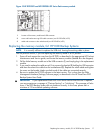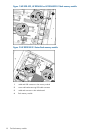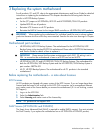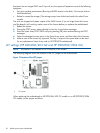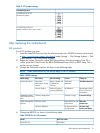
Using the ProLiant Guide with HP D2D2504 G1 models
When using the HP ProLiant DL165 G5 guide, be aware of the following HP D2D-specific
information:
• The AMD Opteron 2384 2.7GHz (75W), part number 495643-005, is the only processor
that is supported.
• The HP D2D has four removable hard disks.
• There is no optical media storage.
• The configuration of the system memory is 8 GB (4 x 2 GB DIMMS PC2-6400). The part
number for each 2 GB DIMM is 499276-061.
• The HP D2D is supplied with an HP Smart Array P400 controller (with 512 MB and BBWC)
pre-installed. For more information about this card, search on http://www.hp.com/support/
manuals.
◦ P400 card: 441823–001
◦ 512 MB memory: 405835–001
◦ BBWC: 398648–001
◦ BBWC cable assembly: 409125–001
POST messages and troubleshooting
The HP D2D Web Management Interface is the primary source of troubleshooting information.
However, it is not able to capture power-on self-test hardware-related issues. Always refer to the
appropriate Maintenance and Service Guide for Power-On Self-Test (POST) information. To view
POST messages you will need a system console attached to the HP D2D. Please see the HP D2D
Backup System User Guide for more information about connecting and using the system console.
Tasks that are unique to the HP D2D
The following tasks are described in this guide:
• How to replace the flash memory module
• How to replace the motherboard
• How to replace the HP Smart Array RAID controller
Software upgrades
The Web Management Interface is used to upgrade software and also has a link to the HP Support
website from where the software must be downloaded. Language Pack upgrades are also available
to ensure all updates to screen messages and help text are displayed correctly in all languages.
For more information about the upgrade process and how to use the Web Management Interface,
please refer to the Software (Administration) section of the Web Management Interface chapter
in the HP D2D Backup System User Guide. See also Related documentation (page 42).
14 Introduction



